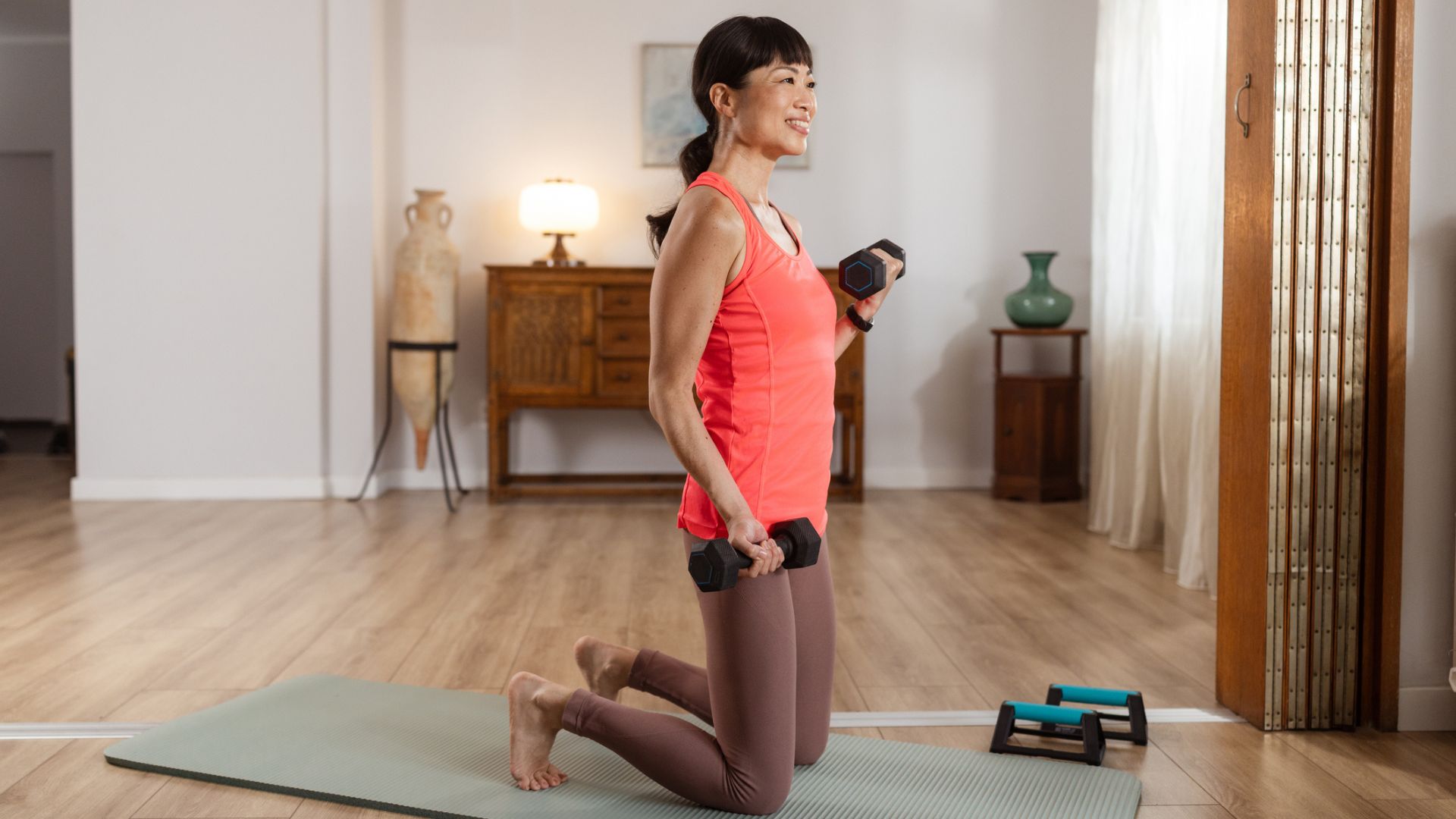A physical therapist says this easy, two-minute trick will provide immediate relief from tech neck
Show your neck some love with these simple but effective moves


Many of us are guilty of spending too much time on our phones, watching videos, catching up on socials and messaging friends. Hunching over your device for long periods can make your neck, shoulders and upper back feel stiff and achy. And that dull, achy feeling has a name: tech neck.
Dr. Claire Morrow, a physical therapist at Hinge Health, says the position people are usually in when using their phones can trigger strain in the back of the neck. Gentle movement can help.
"Doing some simple exercises or even just changing positions or moving around can help," Dr. Morrow says. "These steps are more successful when done as soon as you start feeling soreness."
Below, Dr. Morrow outlines a quick, two-minute routine you can do when you’re feeling achy. These moves should get the blood flowing and deliver oxygen to those tight, stiff areas.

Claire Morrow has practiced physical therapy in various outpatient settings since 2013, and her current role is with Hinge Health, a healthcare technology company. There, she has helped build a team of physical therapists and advised product teams as they build a nationwide digital musculoskeletal clinic. She graduated from Northwestern University in 2005 with a Bachelor of Music in Viola Performance and from Touro University Nevada with a Doctor of Physical Therapy in 2013. She completed the Kaiser Northern California Orthopaedic Manual Physical Therapy Fellowship in 2016 and is a board-certified orthopedic clinical specialist.
1. Shoulder roll
Sets: 1 Reps: 10 in each direction
- Sit or stand straight with your hands by the sides.
- Slowly shrug your shoulders up toward the ears then back and down. Go slowly and mindfully.
- Repeat this 10 times, then switch directions.
2. Chin tuck
Sets: 1 Reps: 10
- Start in a comfortable seated position with your chin and neck in a neutral position.
- With a finger lightly touching your chin, move your head and chin backward away from your finger. Do not drop your gaze or tilt your head. Your chin should move horizontally back into your neck while your finger stays where it is.
- Hold for a count of two then relax back into your normal resting position with your chin in contact with your finger.
3. Seated thoracic extension
Sets: 1 Reps: 3
Get the Fit&Well Newsletter
Start your week with achievable workout ideas, health tips and wellbeing advice in your inbox.
- Sit in a chair with a backrest that reaches to roughly your shoulder blades. Clasp your hands behind your neck.
- Shift your body so your upper back is in contact with the top of the chairback.
- Gently lean back, lifting the elbows towards the ceiling as far as is comfortable. Use the chairback to help you stretch your upper back.
- Hold for five to 10 seconds.

Beth Ann Mayer is a freelance writer and content strategist for Lemonseed Creative with experience writing in health, sports, fitness, and nutrition. Her bylines have appeared in USA Lacrosse Magazine and on Healthline.com, Parents.com, and Parade.com. When she’s not writing, you can find her training for marathons, reading, and wrangling her two children, husband, and surplus of pets.
-
 Do your gut a favor with this dietitian's gut-friendly veggie-filled fried rice recipe
Do your gut a favor with this dietitian's gut-friendly veggie-filled fried rice recipeKeep your tummy happy with this flavorful twist on a favorite
By Lou Mudge
-
 I’m a personal trainer and these are some of my favourite exercises to build core and upper body strength at home
I’m a personal trainer and these are some of my favourite exercises to build core and upper body strength at homeAll you need is a set of dumbbells for this kneeling workout
By Maddy Biddulph